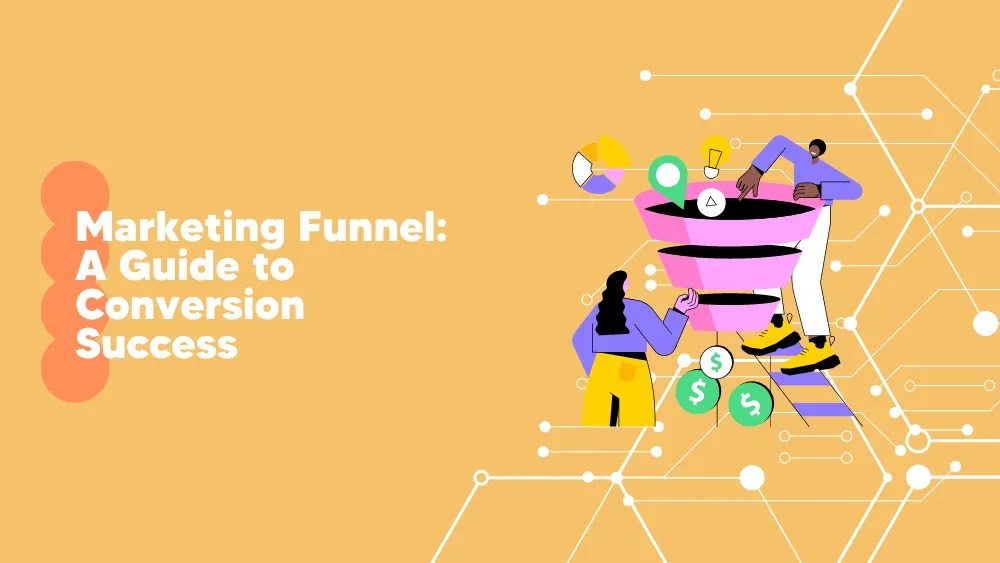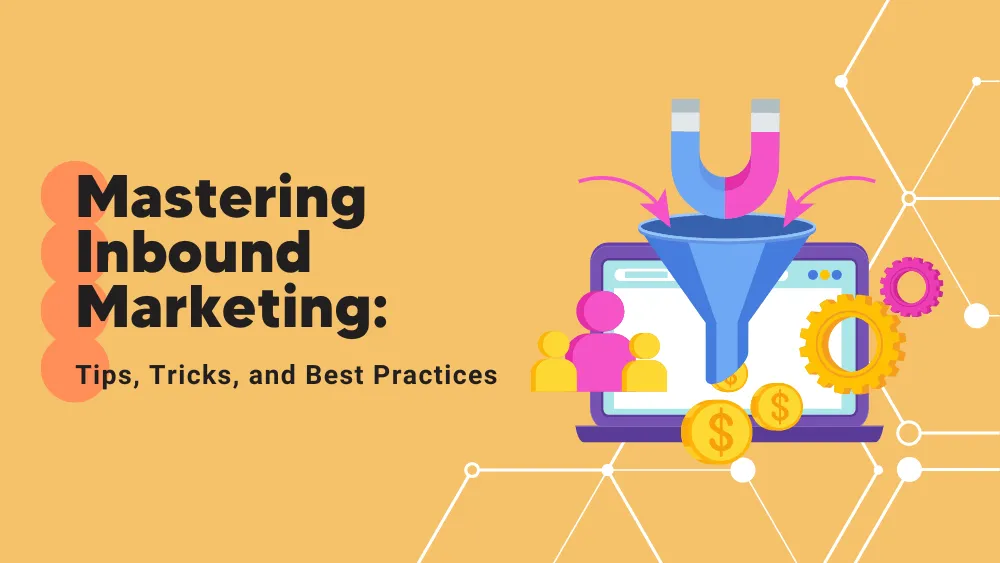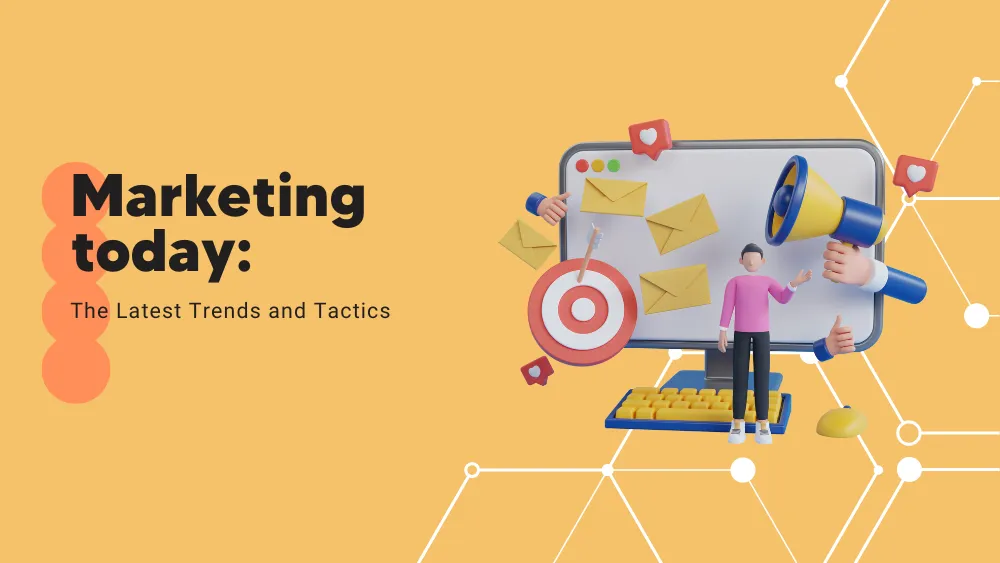Table of Contents
The marketing funnel is like that handy kitchen tool we use for aim-assist, pouring potential customers from the wide brim of discovery to the narrow spout of sales. But this isn’t some fancy kitchen fad, and it’s the bread and butter of successful marketing strategies. It shines a light on your game plan, uncovers your strengths, and digs out the weak spots that need a little love and attention.
In today’s cutthroat business environment, having a well-structured marketing funnel is less of a luxury and more of a necessity. It illuminates your marketing approach, pinpoints strengths, and uncovers areas for improvement.
This article will unfold the intricacies of the marketing funnel. We will delve into each stage, from the initial awareness to the decisive act of purchasing. We aim to help you master the art of the marketing funnel, so you can integrate it into your strategy and boost your conversion success.
What is Marketing Funnel
So, why a funnel? Much like its kitchen counterpart that efficiently guides ingredients to a specific destination, the marketing funnel represents a theoretical customer journey toward purchasing a product or service. At each journey step, some potential customers drop off, resulting in fewer and fewer people moving closer to its end.
Dissecting the Beast – The Stages of a Marketing Funnel
Now, let’s dive into the heart of the notion of the marketing funnel. Despite sounding like a fancy Italian opera, we will use the AIDA model, which stands for Awareness, Interest, Desire, and Action. Let’s go through them one by one.
Awareness
It’s love at first sight. Your potential customers lock eyes with your brand through a viral tweet, a mind-blowing blog post, or their best friend’s rave review. The air is thick with curiosity as they explore your brand, savoring its offerings and getting a feel for its personality. By the time the music stops, your brand has morphed from a random stranger to a potential ally – a potential solution if such a need arises.
Consideration
They’ve seen you, like you, and now they want to know if they need you. During this phase, prospective customers are busy bees, comparing your brand to the competition and asking tough questions. They might be poring over customer reviews, attending your webinars, or examining your case studies. It’s a thoughtful phase, a tug of war between heart and mind as they grapple with whether your offerings can fill the void in their lives.
Conversion
This is the grand finale, when the curtain rises, and your customer decides you’re the one. It’s a validation of your brand, a sign that they believe in your ability to solve their problem. It’s their trust in you that transforms their pondering into purchasing.
Loyalty
But wait, there’s more! The journey doesn’t end at the transaction. It’s the post-purchase pillow talk, the evaluation of their experience. If you’ve hit the right notes, they’ll return for more, becoming loyal patrons and your most passionate cheerleaders. Of course, there are ways your brand can cultivate this loyalty, e.g., by reaching out to the customer, asking for feedback, and offering personalized incentives.
Targeted Metrics For Each Stage
The concept of “targeted metrics” is fundamental to understanding the health and performance of your marketing funnel. When we refer to it, we’re talking about the key indicators that can tell us how well each funnel stage performs.
Top of the Funnel Metrics
At the top of the funnel, where your main objective is to raise brand awareness and reel in as many potential customers as possible, your metrics will revolve around reach and engagement.
- Unique reach: This refers to the total number of different people who have seen your content at least once. It’s a crucial indicator of how well your content or ads are doing in terms of visibility.
- Completion rate: For video content, the completion rate represents the percentage of viewers who watched the content to its end. High completion rates often suggest compelling, engaging content.
- Click-through rate (CTR): CTR measures the percentage of viewers who clicked on a link within your content or ad. A higher CTR implies that your call-to-action is effective and the content resonates with your audience.
Middle of the Funnel Metrics
As we move down to the middle of the funnel, the focus shifts to nurturing and maintaining the interest of potential customers:
- Detail page views: This refers to the number of times people viewed the specific pages of your products or services. This metric shows the level of interest in your offerings.
- New-to-brand percentage: This metric helps identify how many customers interact with your brand for the first time, indicating your ability to attract new audiences.
Bottom of the Funnel Metrics
Finally, at the bottom of the funnel, the emphasis is on conversion and the cost efficiency of your marketing efforts:
- Return on Advertising Spend (ROAS): This is a measure of the revenue generated for every dollar spent on advertising. It’s an important indicator of the financial effectiveness of your ad campaigns.
- Advertising Cost of Sales (ACoS): ACoS tells you how much you’re spending on ads for each sale you make. A lower ACoS generally means a more cost-effective campaign.
- Customer Acquisition Cost (CAC): CAC measures the total cost of acquiring a new customer, including all marketing and sales expenses. Keeping CAC as low as possible while still acquiring high-quality customers is the goal.
Significance of a Marketing Funnel to Conversion Success
Each stage of the funnel is like a step on a ladder that can lift your business to new heights. The awareness phase could be your brand’s coming out party on social media, while the consideration stage might need more intimate chats, like informative webinars or customer testimonials.
Moreover, the funnel is not there to attract new customers; it’s also a loyal partner, nurturing existing ones. After all, courting a new customer can cost up to five times more than keeping an existing one.
Examples of Marketing Funnel Done Right
Some brands have managed the marketing funnel tango to perfection, leading to enviable conversion success. Take, for instance, the Netflix of courses – MasterClass. Their strategy starts with glitzy ads featuring celebrity experts, stirring up a frenzy of awareness. Next, they seduce with tantalizing trailers of their classes during the consideration phase. After a simple sign-up process (conversion), they keep their students hooked with top-notch classes and engaging assignments, nurturing a loyal fan base.
Another sweetheart of marketing funnel success is the digital powerhouse, Adobe. They woo their customers with informative blog posts, tutorials, and webinars that generate awareness and interest. A free trial is their golden ticket to conversion, followed by fostering loyalty with their creative cloud, regular updates, and a supportive community for users to showcase their creations.
Constructing Your Marketing Funnel Masterpiece
Building a successful marketing funnel is more than just following a blueprint. Although not exactly romantic, it’s a dance choreographed to the rhythm of your potential customers’ interactions with your brand, creating opportunities for connection at every beat.
Key Ingredients of a Killer Marketing Funnel
- Flexibility: While a marketing funnel serves as a valuable guide, it’s essential to understand that the customer journey can be unpredictable and non-linear. Prospective customers might jump in at any stage or even skip stages. Consequently, your marketing strategy should be flexible enough to cater to these diverse journeys.
- Full-Funnel Approach: Your strategy should not just aim to push customers down the funnel but also engage them at each stage. Each step taken by them means a different opportunity to charm and delight.
- Cross-Channel Optimization: A comprehensive funnel strategy often includes advertising across several channels. Understanding how these channels influence each other and impact your key performance indicators (KPIs) can help you, simply puy, not throw your money down the drain. Tools like Amazon Attribution can give you insights into how each step contributes to the overall dance, helping you fine-tune your moves.
- Personalized Messaging: Customers at different stages need to hear different words of encouragement. An ad server can help deliver the right motivation to audiences based on their position in the customer journey, fostering a harmonious connection.
Benchmarking
It’s always handy to know what the competition is up to. Certain tools can give you a sneak peek, helping you understand if you’re hitting the right notes or need to tweak your routine.
- SEMrush: This comprehensive digital marketing tool can give you a wealth of data on your competitors’ SEO, paid search, and content strategies. It allows you to monitor their rankings for keywords, backlink profiles, advertising strategies, and more.
- Ahrefs: Similar to SEMRush, Ahrefs is an excellent tool for analyzing competitors’ SEO strategies. It provides detailed information about organic keywords, backlinks, and the most popular content.
- SpyFu: This tool allows you to see the keywords that competitors are ranking for in search results and their Google Ads strategy. It’s a great way to discover new keywords and see how others in your industry position themselves.
Digital Tactics Across the Funnel
Search Engine Optimization (SEO): At the Awareness stage, SEO is your spotlight, putting your brand on center stage for potential customers searching for related products or services.
Content Marketing: A strategy that spans multiple stages, content marketing can raise the curtain, engage the audience, and even get them humming along. Blog posts, e-books, infographics, videos, and webinars can all be part of your repertoire.
Social Media Marketing: Social platforms are your stage, allowing you to perform for potential customers at various stages. Platforms like Facebook, Instagram, Twitter, and LinkedIn can drum up brand awareness, engage with audiences, share content, and sell tickets.
Email Marketing: A tool for the Desire and Action stages, email marketing can nurture leads, offer personalized recommendations, and prompt standing ovations (i.e., conversions).
Pay-Per-Click (PPC) Advertising: PPC strategies, like Google Ads or social media ads, are effective at catching your audience’s attention during the Awareness stage and nudging them towards Interest and Desire.
Tools for Managing Your Marketing Funnel
Thanks to the magic of marketing technologies (MarTech), managing your marketing funnel has become easier than teaching a toddler the ABCs. Here are a few categories of MarTech tools that can take your funnel management from amateur hour to prime time:
- Customer Relationship Management(CRM) Tools: These are the stage managers of your operation. Platforms like Salesforce and HubSpot keep track of all your interactions with customers and leads, ensuring nobody gets lost in the wings.
- Marketing Automation Tools: Picture these as your trusty stagehands. Software like Marketo and Pardot can take over routine tasks like email marketing, social media posting, and running ad campaigns, giving you time to fine-tune your grand performance.
- Analytics Tools: These are your audience response meters. Google Analytics, Adobe Analytics, and the like can tell you how your audience reacts to your performance and how they move through your show, giving you the insights you need to up your game.
- Content Management Systems (CMS): These are your scriptwriters. Platforms like WordPress and Joomla help you create, manage, and optimize your content, a critical part of engaging your audience at all stages of the show.
- Conversion Rate Optimization (CRO) Tools: These are your set designers. Tools like Optimizely and Unbounce help you experiment with different elements of your website or landing pages, ensuring every detail is in place to wow your audience at the show’s climax – the conversion.
Conclusion
Understanding and utilizing the marketing funnel effectively can be instrumental in your business’s success. Each stage requires careful planning, the implementation of appropriate tactics, and the use of innovative MarTech tools. Key aspects to consider are flexibility, a comprehensive approach to each stage, targeted metrics, cross-channel optimization, and a keen understanding of your competition.
It’s crucial to remember that successful marketing funnels must be tailored to your specific customer journey, which might not follow a linear path. Constant monitoring, testing, and refining based on your audience’s behavior will ensure you can adapt to their needs and preferences.
Now it’s your turn to act. Start mapping out your marketing funnel using the insights shared in this article. Determine which strategies will best serve your objectives at each stage and take the plunge to implement them. Benchmark your progress against your competition, refine as necessary, and watch your conversion success soar.





